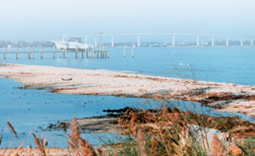You are here: Home › Stressors › Extreme Natural Events › Harmful Algal Blooms › Current Programs › HAB Prevention, Control and Mitigation

HAB Prevention, Control and Mitigation (PCM)
program
Highlights

The Harmful Algal Bloom Prevention, Control, and Mitigation (HAB PCM) Research Program is a new program called for by the HAB community in the recently published HAB Research, Development, Demonstration, and Technology Transfer (RDDTT) National Workshop Report. The program is one component of a larger RDDTT strategy outlined in the workshop report and in the HABHRCA report, Harmful Algal Bloom Management and Response: Assessment and Plan.
The RDDTT strategy, including this program focused on HAB PCM, will yield many benefits for public health and resource managers and for residents, resource users, businesses, and other stake holders in at-risk and affected coastal communities. As outlined in the workshop report, benefits will include:
- Healthy fisheries industries selling seafood that is safe and free of biotoxins;
- Reductions in the frequency of large, unsightly and harmful accumulations of algae;
- Ecosystems that are less threatened by invasions of nonindigenous HAB species;
- Mitigation of bloom impacts using a suite of practical, previously tested strategies;
- Environmentally benign strategies to suppress and prevent HABs;
- Sophisticated, yet less expensive, easy to operate instruments for HAB detection;
- Teams of scientists, managers, and community leaders prepared to respond to events;
- Improved prediction and early warning of blooms and HAB impacts due to better predictive models, networks of moored automated observing systems, and satellite surveillance capability for detection and tracking over large distances;
- Improved human health and ecosystem risk assessment; and
- Effective means of educating and warning the public.
For more information
- Printable Fact Sheet (PDF)
- HAB PCM Projects
- Regional HAB Research
- HAB Research Accomplishments
- Related Links
- News and Feature Archive

